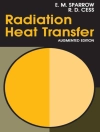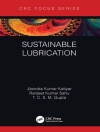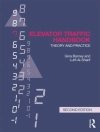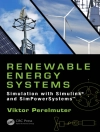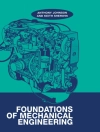An important instance of the application of unbuckled solid mechanics is that of its stability and small movements from this situation. The problem expressing goes through the linearization of the movement equations set up in the 3rd volume of this treaty, by their limited development. This book gives and develops the process which leads to the differential linear equations expressing this kind of movement and allowing the study of the equilibrium and the stability of an unbuckled solid.
Daftar Isi
Introduction ix
Table of Notations xiii
Chapter 1 Equilibrium, Stationary Movement and Oscillation of a Free Solid 1
1.1 Expression of the fundamental principle of dynamics for a free solid 1
1.2 Canonical form of the fundamental principle 4
1.2.1 Dynamic resultant 5
1.2.2 Dynamic moment at O s 5
1.2.3 Fundamental principle of dynamics 7
1.3 Equilibrium of the free solid 7
1.3.1 Equations of equilibrium 7
1.3.2 Stability of equilibrium 9
1.4 General equations of small movements of a free solid 9
1.4.1 Reminder of developments limited to the first order 9
1.4.2 Equations of small movements of the free solid 12
1.4.3 Analytical mechanics of free solids 43
1.5 Matrix expression of small movements of a free solid 59
1.5.1 Using vector representation 60
1.5.2 Using analytical mechanics 63
1.5.3 Relative situation of frames at the equilibrium 65
1.6 Stationary movement 67
1.6.1 Cyclic parameters 67
1.6.2 Characterizing a stationary movement 68
1.6.3 Conditions of realization of a stationary movement 69
1.6.4 Neighboring motions and stability of a stationary movement 71
1.6.5 Applications 74
Chapter 2 Solving Equations of Small Movements 75
2.1 Linear differential systems with constant coefficients 75
2.1.1 General periodic solution of the homogeneous system 77
2.1.2 Particular solution to the system 79
2.1.3 Exercise 1 81
2.2 Laplace transformation 87
2.2.1 Definition 87
2.2.2 Linearity of a Laplace transformation 87
2.2.3 Laplace transforms for common functions 88
2.2.4 Functional properties of the Laplace transformation 91
2.2.5 Examples of use of the Laplace transform 93
2.2.6 Applications 96
Chapter 3 Oscillator Studies 115
3.1 Physical nature of oscillatory motion 115
3.2 The single oscillator 116
3.2.1 Definitions 117
3.2.2 Conditions of an oscillatory motion 117
3.2.3 Study of free oscillatory motion 118
3.2.4 Study of forced oscillations 123
3.2.5 Study of a modulated oscillatory signal 126
3.3 Motion of coupled oscillators 129
3.3.1 Coupling of two oscillators 129
3.3.2 Study of free oscillation 129
3.3.3 Applications: problem 6 138
3.4. Oscillatory device of k oscillators – equilibrium and stability 154
3.4.1 Approaching the problem 154
3.4.2 Routh criteria 155
Chapter 4 Gyroscopic Motion 163
4.1 Gyroscopic coupling 163
4.1.1 Composition of the device 163
4.1.2 Velocity-distributing torsor 166
4.1.3 Kinetic energies of all three components 166
4.1.4 Equations of dynamics 167
4.1.5 Equations of analytical mechanics 168
4.1.6 Situations of equilibrium of the gyroscopic device 172
4.1.7 Stability of the stationary movement 173
4.2 Gyroscopic pendulum 177
4.2.1 Composition of the device 177
4.2.2 Velocity-distributing torsors 178
4.2.3 Kinetic energies 179
4.2.4 Lagrange equations 179
4.2.5 Equilibrium and stability 181
4.3 The gyro-compass 184
4.3.1 Composition of the device 184
4.3.2 Fundamental principle of dynamics 186
4.3.3 Equations of analytical mechanics 186
4.3.4 Stationary movement and stability 193
4.3.5 Note for establishing Lagrange equations 199
4.4 Applications: problem 7 – motion stabilizer 199
Bibliography 213
Index 215
Tentang Penulis
Michel BOREL, Former mechanics lecturer at CNAM Center in Versailles (1971-1999); associated professor at Petroleum and Motors National high School – ENSPM (1978-2008); engineer at Bertin Society (1970-1980); engineer at General Armement Direction – DGA (1980-2009).
Georges VÉNIZÉLOS, Professor, chair of mechanical systems designing, Conservatoire National des Arts et Métiers (CNAM).


